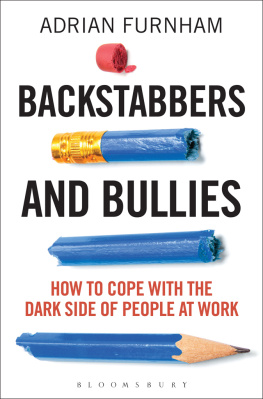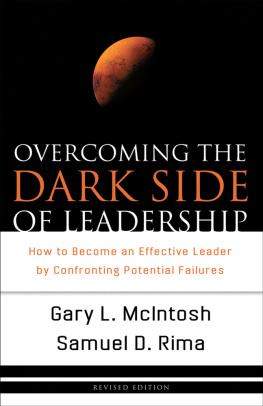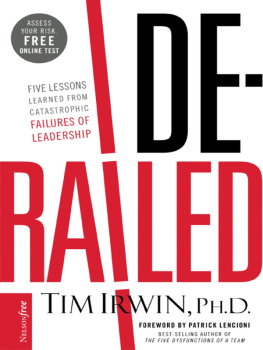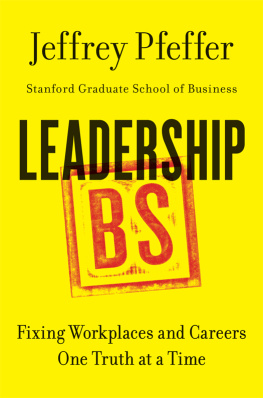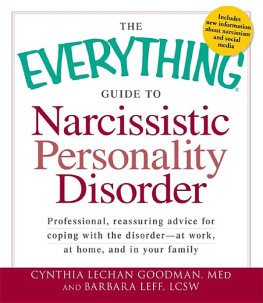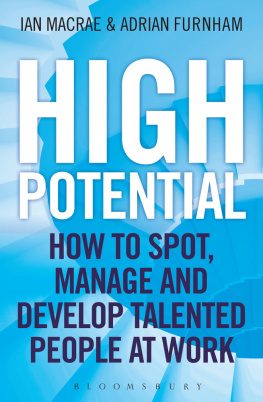Backstabbers and Bullies
Backstabbers and Bullies
How to Cope with the Dark Side of
People at Work
Adrian Furnham
Bloomsbury Information
An imprint of Bloomsbury Publishing Plc

For Alison and Benedict as always
I got interested in this topic for both personal and academic reasons. Like most of us, I have worked with, and for, people who could be variously described as bad, mad or sad. They can cause not only misery for many but also mayhem, distress and disaster for whole organizations. Further, we read about them more and more in the press. Indeed, it has been suggested that more fail and derail at leadership than thrive and excel.
The question that always intrigued me most was how these people climb the greasy pole in the first place and get to such exalted positions without being found out. How do deeply dishonest, egocentric and flaky persons rise to positions of power and responsibility? How do they possibly get elected and then promoted? Has it not been apparent what difficult, devious, devils they were early on in their careers? Surely, all or many of the signs were there.
Most of us have encountered nasty, negative, narcissists at work. The problem for those who believe in a Just World were we get what we deserve is that often these traits are rewarded rather than punished. The meek do not inherit the earth: the Machiavellians do. Worse, some never seem to get their come-uppance in this life: though it remains uncertain about the next.
Many have encountered a nasty, selfish, bullying manager. Some people seem to have only ever had bad bosses. Sometimes it is just luck on who you get as your boss or leader. But it does depend on the sector in which you work and the country where the organization is located.
I hope that in this book I will not be accused of pathologizing all management problems. Indeed, very early on I make a distinction between Bad, Mad and Sad managers. And, I am clear that just as for fire to occur you need heat and fuel and oxygen, so for derailment you need not only personal pathology but also situations that allow it to play out.
Equally, I feel it as my duty to alert people to the fact they could well be working with or for a Corporate Psychopath, a Business Narcissist or a Histrionic Show-Off. It is all very well to diagnose or label people, and it is equally important to understand how they operate in the world of work.
As I say to various groups: if you are articulate, educated, good-looking and a narcissistic psychopath, the world is your oyster. We read daily about powerful business people, politicians and celebrities whose cold-blooded, manipulative deception is revealed only years after their crimes were committed. The question is how, when and why these bastards, bullies and backstabbers achieved so much for themselves before they were unmasked.
I recall going to a school reunion 25 years after matriculating and finding how well the class psychopath had done. He had three wives by the age of 40, which must have entailed some costs. He was a callous, fearless bully feared and hated by most of the more academic boys, whom he sought to torture in a variety of ways. At University I encountered a couple of more, one of whom was in effect a petty criminal. If they were privileged and charming, they could get away with anything and often did.
Also, as an academic and consultant, it became clear that people with a lot of dark-side issues could exploit their predictions and do rather well in the world of work. I have dealt with many very charming movers and shakers, who had the reputation for being tough change agents. Many left behind a trail of destruction at every level.
My other experience was academic. I have been very fortunate to have known Robert and (the late) Joyce Hogan for nearly 20 years. They not only pioneered work on the dark side of personality but they have been also very generous with their ideas. Bob and I discuss and debate lots of issues in emails, conferences, fine hotels and airport lounges. Hogans work inspired me a dozen years ago and still does. He remains a man of great curiosity and generosity whose impact on psychology will endure for many decades.
Others working on this topic, like Delroy Paulhus and Tim Judge, have been an inspiration. The dark-side area is at the intersection of various different specialist areas in psychology: differential, clinical and work psychology as well as psychiatry. Few academics have the breadth to cover such a range to see the connections. Currently, I have a number of PhD students (Mary-Clare Race, Kat Palaiou and Simmy Grewal) working in this area, and I am sure that I learn as much from them as they do from me. It is surely a great privilege to have bright, fit, forward-looking people to work with.
I have written a number of previous books on this topic but the literature in this erstwhile backwater is moving ahead fast. It has been pointed out that there are around 60,000 to 80,000 books on leadership in the English language and most are on the brighter side. The idea of leadership failure and derailment has been brushed under the carpet for far too long and only now are the statistics on the sheer numbers who fail coming out.
Boddy, C. (2011). Corporate Psychopaths. Basingstoke: Palgrave.
Dotlich, D., & Cairo, P. (2003). Why CEOs Fail. New York: Jossey Bass.
Finkelstein, S. (2003). Why Smart Executives Fail. New York: Portfolio.
Furnham, A. (2010). The Elephant in the Boardroom: The Psychology of Leadership Derailment. Bracknell: Palgrave MacMillan.
Ghaemi, N. (2011) A First-Rate Madness. Harmondsworth: Penguin.
Hogan, R. (2007). Personality and the Fate of Organizations. Mahwah, NJ: Lawrence Erlbaum.
Kets de Vries, M. (2006). The Leader on the Couch. Basingstoke: Palgave.
Kets de Vries, M. (2006). Coach and Couch. Basingstoke: Palgrave.
Miller, L. (2008). From Difficult to Disturbed. New York: Amacon.
Oldham, J., & Morris, L. (1991). Personality Self-Portrait. New York: Bantam.
Owen, D. (2009). In Sickness and in Power. London: Methuen.
Owen, D. (2012). The Hubris Syndrome. London: Methuen.
Ronson, J. (2011) The Psychopath Test. London: Picadore.
I have tried to write an up-to-date, referenced and topical book in this area. I hope that it is both informative and useful, approachable but sound, critical (in the best sense) comprehensive yet sufficiently succinct. I have drawn at times heavily upon previous work in papers, books and chapters and tried to be strictly up to date.
I have been fortunate in having had a number of people help me. Luke Treglown has helped in many ways as my top Research Assistant. Luke has done a lot of leg work on many of these chapters, and I am ever grateful for his positive work ethic and fine mind. I have relied in sections for his detailed and careful work and I am most grateful. He will, I am sure, have a stellar career as an academic if he is unwise enough to choose to become one.
I have also had many dark-side chats with John Taylor, David Pendleton and others. They have dealt with some of the chaos that these people leave in their wake. Moreover, I have had, over the past few years, some very direct contacts with people I have to consider as members of the forces of darkness. This book has been an attempt to shed light on the causes and consequences of that darkness.
And, as always, I need to thank my long-suffering wife and son for being absent so often in the office. I hope one day to find a cure for my workaholism.
Islington, London
Next page
